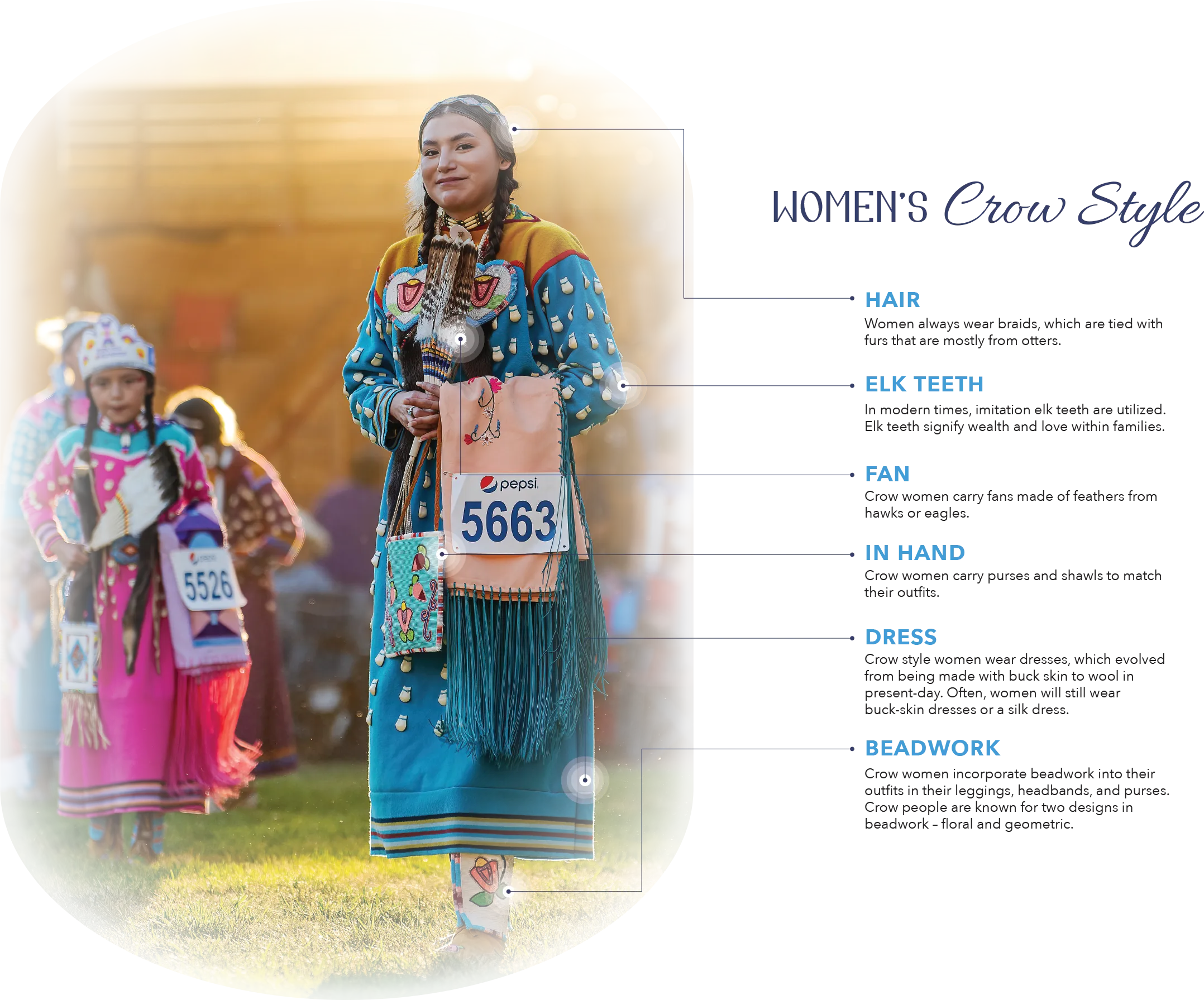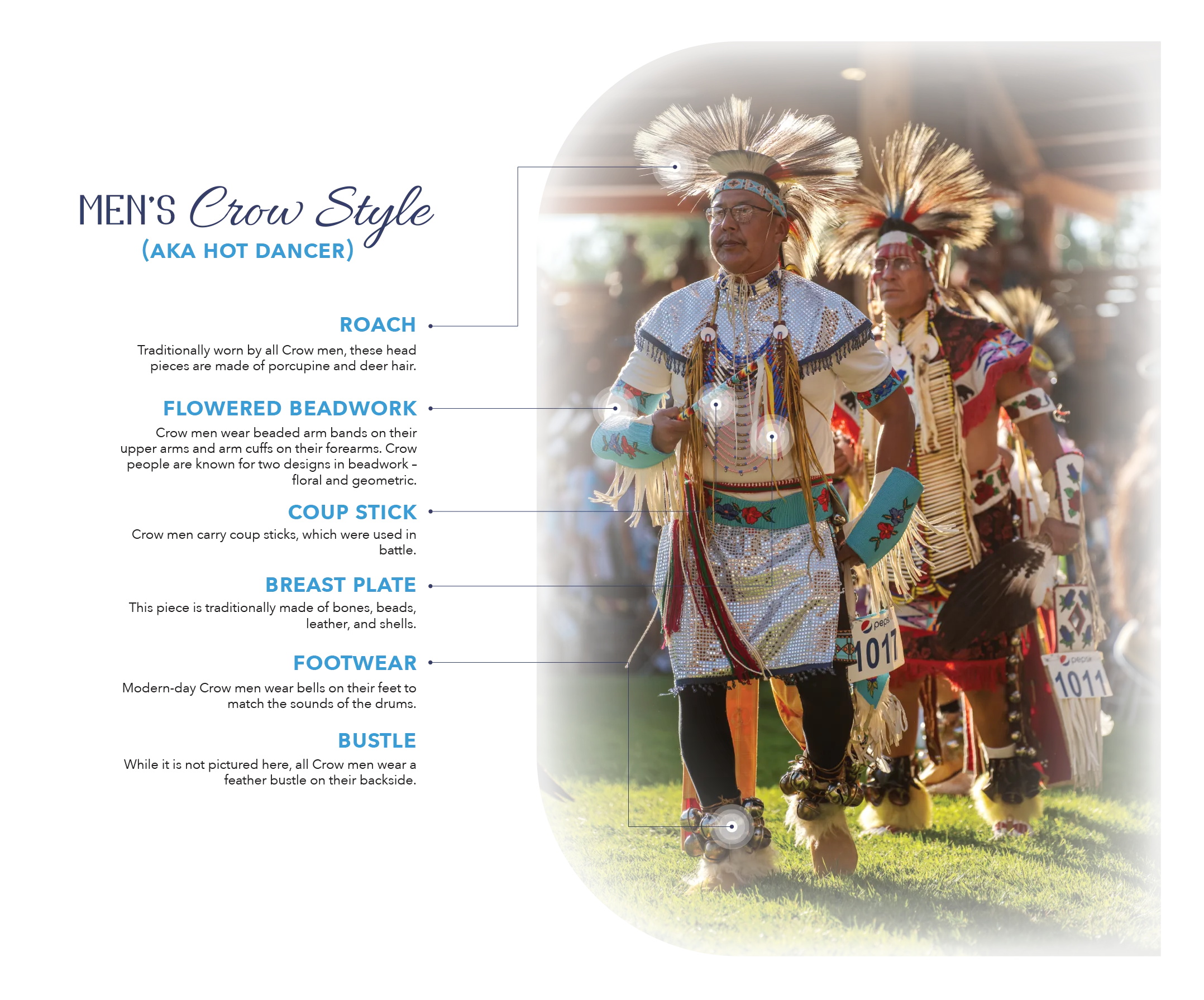1450-1500 - Shiipdeetash’s Sacred Journey
Shiipdeetash the first Apsáalooke Chief starts his migration to find the Ihchitchiiaee/the tobacco plant
- First stop Awaxaammacheétche/Chief Mountain in northwestern Montana
- Second stop Bilichkawaxóose/the Great Salt Lake
- Third stop Baáiiaashe/the Canadian River in what is now Oklahoma
- Final stop Awaxaawakússawishe/Cloud Peak in the Big Horn Mountains of what is now Northern Wyoming.
1735 – Acquisition of Horses and Metal Tools
The Apsáalooke acquired horses and metal knives and kettles-The Apsáalooke acquisition of horses, metal knives, and kettles in 1735 marked a transformative period in history, enhancing mobility, hunting, warfare, trade, and social organization. Horses allowed for greater territorial expansion, improved bison hunting, and increased military strength, while metal tools made daily tasks more efficient. These advancements strengthened their economic power through trade networks and reinforced their cultural identity as a dominant equestrian society. Horse ownership became a symbol of wealth and prestige, reshaping leadership and social structures. This pivotal moment set the stage for the Crow to emerge as a powerful Plains tribe, influencing their way of life for generations. Horse ownership became a symbol of wealth and prestige, reshaping leadership and social structures. These resources, often obtained through intertribal trade and interaction with European traders, expanded Crow influence across the Northern Plains.
1825 – First Treaty with the U.S. Government
The Crow signed their first treaty with the United States, recognizing their territory and establishing trade relations. This agreement was symbolic and lacked enforcement, but it set a precedent for future treaties and encroachment on Crow sovereignty.
1850's–1860's – Fort Relocations and Strategic Alliances
The U.S. government moved the Crow Agency multiple times, and the Crow formed strategic alliances with the U.S. military to protect their lands from enemies like the Lakota and Cheyenne.
1851 – Fort Laramie Treaty
The Crow Nation was officially recognized as owning a vast territory in Montana and Wyoming. However, conflicting claims from other tribes and settlers undermined the treaty's effectiveness, and Crow landholdings continued to shrink.
1868 – Second Fort Laramie Treaty
The Crow ceded much of their land in exchange for a reservation in south-central Montana. This treaty established the borders of the modern-day reservation, but allotment and federal policy in the decades that followed further eroded tribal land ownership.
1876 – Battle of the Little Bighorn
Many Crow warriors served as scouts for the U.S. Army during the battle between the Lakota, Cheyenne, and the 7th Cavalry under George Custer. The Crow supported the U.S. to defend their lands from rival tribes. Their knowledge of the terrain and enemies made them critical to U.S. efforts. The decision to ally was deeply strategic, shaped by long-standing intertribal conflicts.
1887 – Dawes Act and the Beginning of Allotment
Under federal law, communal Crow lands began to be divided into individual allotments, with “surplus” land sold to non-Native settlers. This contributed to massive land loss and weakened communal living.
1888
Wraps His Tail Rebellion-Sword Bearer, also known as Wraps up His Tail, was the leader of the Crow Rebellion. In September 1887, a young Crow medicine man known as Wraps-Up-His-Tail, or Sword Bearer, led a small band of warriors in a raid against the Blackfoot, who had taken horses from the Crow reservation. After the raid, Sword Bearer and his group returned to the Crow Agency to report their success to the Indian agent. However, tensions escalated, ultimately prompting the young leader to retreat into the mountains with his followers. In response, the United States Army mounted a campaign that successfully compelled the Crow to return to the reservation. Sword Bearer and several others were killed in November 1887. Sword Bearer was killed by Fire Bear, an Indian police officer, on November 5, 1887.
1910 – Crow Allotment Act
The formal implementation of allotment policies began, reducing communal ownership and accelerating loss of Crow land to settlers. More than 90% of the original Crow Reservation would eventually be lost through this process.
1924 – Indian Citizenship Act
Crow tribal members, along with all Native Americans, were granted U.S. citizenship. While symbolic, this act did not guarantee equal rights or full political inclusion at the state level.
1934 – Indian Reorganization Act (IRA)
The Crow Nation adopted a formal government under the IRA, which encouraged self-governance and halted further land loss. This also supported the revival of cultural practices and gave tribes a renewed platform to manage their own affairs.
1948 – First Crow Tribal Constitution
The Crow adopted a constitution creating a Tribal Council and formalizing governance structures under the IRA. This system remained in place until the 2001 reform.
1948 – First Crow Tribal Constitution
The Crow adopted a constitution creating a Tribal Council and formalizing governance structures under the IRA. This system remained in place until the 2001 reform.
2001 – Crow Constitutional Reform
Crow Tribe undergoes a constitutional reform-The 2001 Crow Tribe constitutional reform marked a significant shift in the governance of the Crow Nation, modernizing its political structure while maintaining cultural traditions. The reform replaced the 1948 constitution, which had established a parliamentary system with a Tribal Council. Under the new constitution, the tribe adopted a three-branch system of government similar to the U.S. model, comprising an executive, legislative, and judicial branch.
2010's–Present – Cultural Revitalization and Advocacy
Efforts to preserve the Apsáalooke language, teach youth traditional skills, reclaim lands, and protect water rights continue today. The tribe also engages in national movements to defend Indigenous sovereignty and environmental justice.



